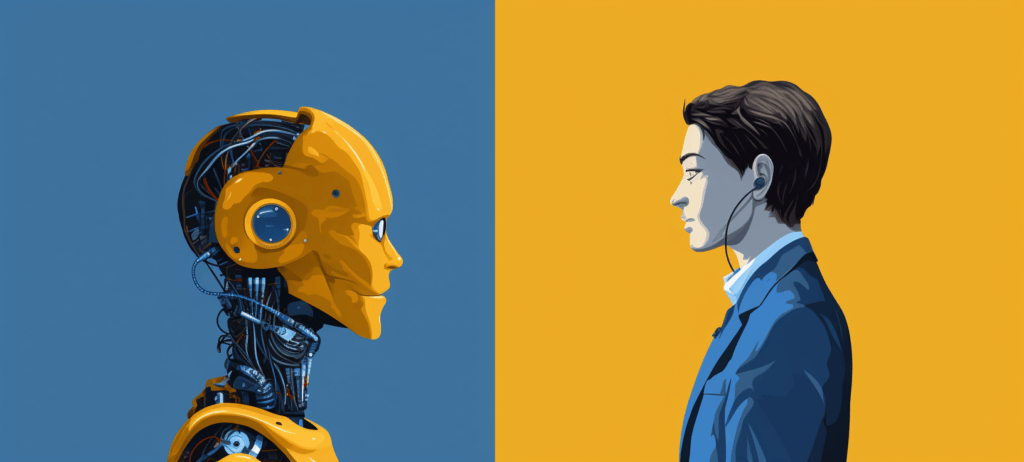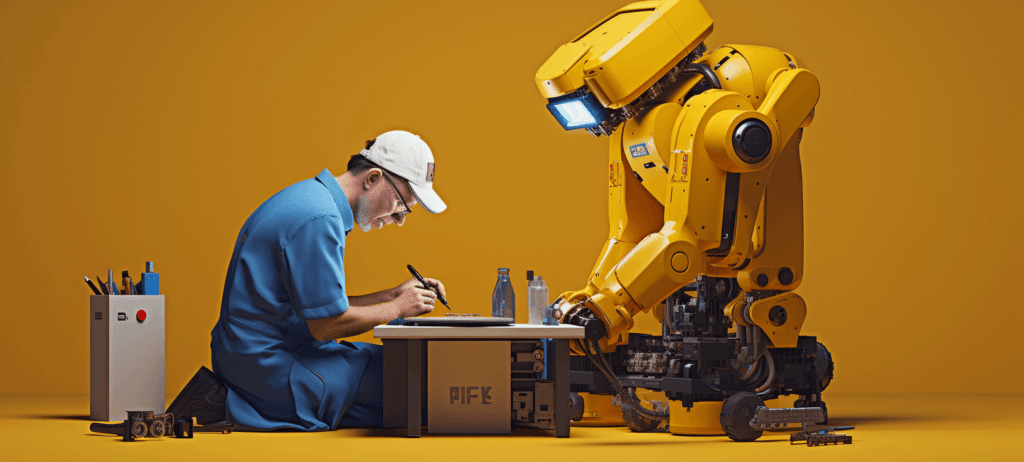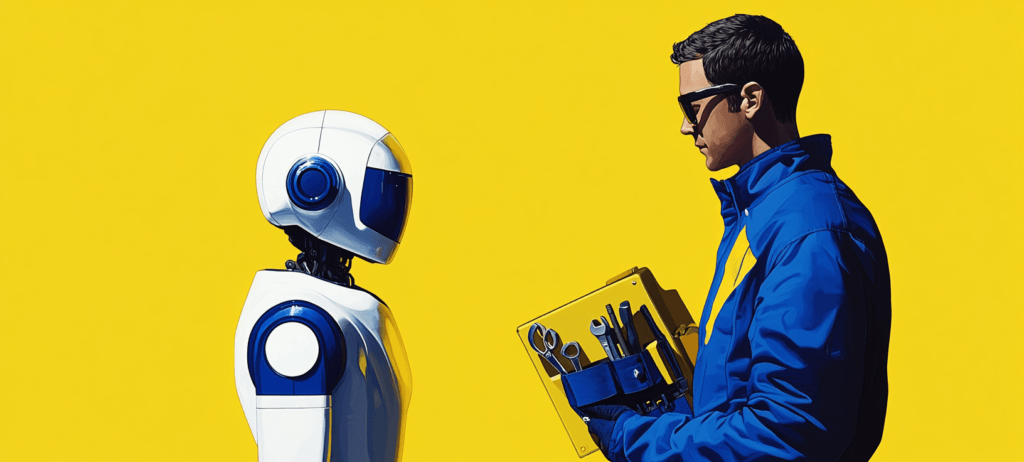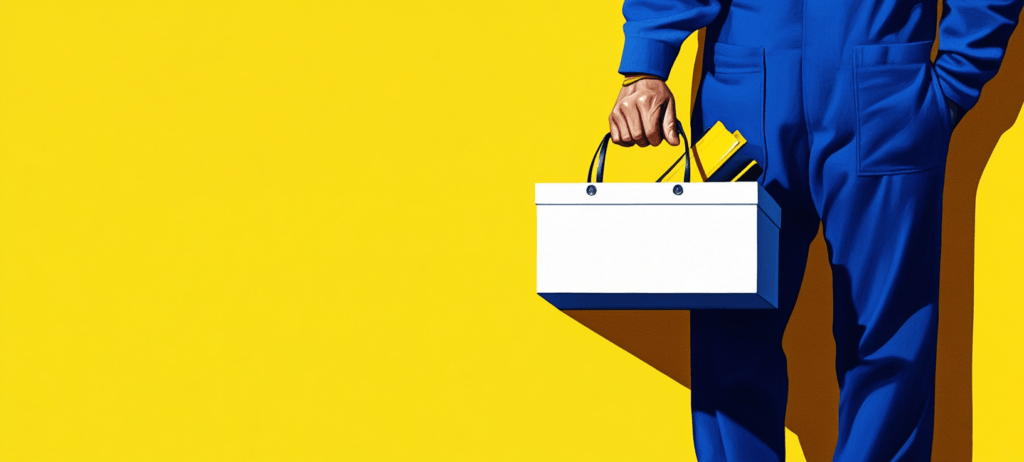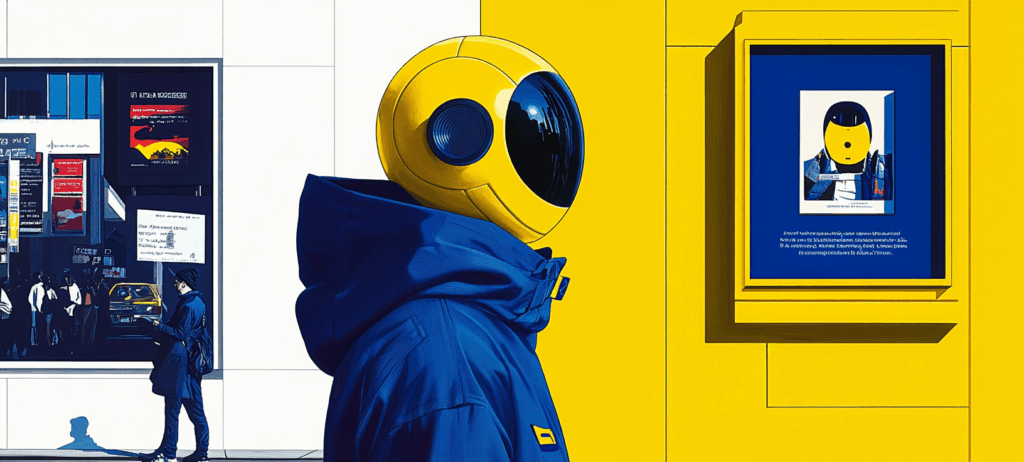Table of Contents
- What are AI-generated ads (and why are brands using them)?
- 10 AI ad examples from top brands
- 1. Liquid Death: Pure chaos with Veo 3
- 2. Pizza Hut: The “Pepperoni Hug Spot” fever dream
- 3. Kalshi: NBA Finals ad made entirely with AI
- 4. Coca-Cola: “Create Real Magic” with AI art
- 5. Nike: “Never Done Evolving” with Serena Williams
- 6. Cadbury: Personalized AI ads with Shah Rukh Khan
- 7. Dove: “The Code” campaign against AI beauty bias
- 8. Carvana: 1.3 million personalized AI videos
- 9. BMW: “The Ultimate AI Masterpiece”
- 10. Heinz: “AI Ketchup”
- What these viral AI ad examples have in common
- Tools you can use to create AI ads
- AI ethics in advertising
- FAQs about AI-generated ads
- Turn AI ad inspiration into real results
- What are AI-generated ads and why are brands using them? AI-generated ads are advertisements created or enhanced using generative artificial intelligence, from writing copy with ChatGPT to creating full video spots with platforms like Google’s Veo 3 — brands use them for speed, scale, personalization, cost savings, and generating buzz without massive production budgets.
- How did Kalshi create an NBA Finals ad for under $2,000? Kalshi used AI tools like ChatGPT, ElevenLabs, Runway, and Pika to create a complete 30-second commercial entirely with generative AI — from script to visuals to voiceover — proving that small teams can create high-impact campaigns without agency-level budgets.
- What makes Carvana’s AI ad campaign unprecedented in scale? Carvana created over 1.3 million personalized AI-generated video ads, each tailored to an individual customer’s car-buying journey with specific vehicle specs and delivery timelines, demonstrating how AI enables true personalization at industrial scale.
- What ethical concerns should brands consider with AI advertising? Key ethical concerns include AI bias and representation in generated content, the need for transparency and disclosure when using AI, and obtaining proper consent and likeness rights when using someone’s voice or face digitally — balancing innovation with integrity builds consumer trust.
- Which AI tools can marketers use to create their own ads? Marketers can use ChatGPT for scripts and copy, Runway Gen-4 or Pika for AI video generation, Google’s Veo 3 for cinematic clips, Synthesia or HeyGen for avatar videos, Midjourney or DALL·E for visuals, and ElevenLabs for voiceovers — mixing these tools can produce full AI ads quickly.
AI didn’t just step into advertising. It kicked the door down.
Brands are using AI-generated ads to stop the scroll, spark conversations, and rack up millions of views. And these aren’t just flashy tech demos. They’re full campaigns driving real engagement, real conversions, and real cultural buzz.
If you’re looking for AI ad examples that show what’s actually working, you’re in the right place. We’ve rounded up 10 of the most talked-about AI-generated ad campaigns from top brands, plus the tools they used and what you can learn from each one.
Here’s what we’ll cover:
- What are AI-generated ads (and why are brands using them)?
- 10 AI ad examples from top brands
- Tools you can use to create AI ads
- AI ethics in advertising
- FAQs about AI-generated ads
Imagine an AI workspace where you can collaborate with team members, share prompts, and leverage personas for generative AI.
AI Workspace for Business Teams

What are AI-generated ads (and why are brands using them)?
AI-generated ads are advertisements created or enhanced using generative artificial intelligence. That could mean anything from using ChatGPT to write ad copy to leveraging platforms like Google’s Veo 3 or Pika to generate entire video spots. Some brands use AI to personalize content at scale, while others let the tech drive the creative process from start to finish.
AI isn’t just trendy. It’s a strategic advantage demonstrated by successful AI marketing examples across industries. Brands are investing in AI ads not just to keep up, but to leap ahead.
Here’s why so many big names are going all in:
| Reason | What it means |
| Speed | Brainstorm, test, and launch campaigns faster than traditional production allows |
| Scale | Generate hundreds or thousands of ad variations in minutes |
| Personalization | Tailor ad content based on user behavior, demographics, and interests |
| Cost savings | Cut production time, creative costs, and manual editing |
| Buzz | AI ads are still novel enough to make headlines and turn heads |
In short, AI in advertising blends data, automation, and creativity to deliver campaigns that are faster to produce, more personalized, and often more viral than traditional methods. These ads don’t just sell. They get shared, talked about, and remembered, often without the massive production budget.
So what does this look like when it’s done right? Let’s take a closer look at the most talked-about AI ad examples from top brands and household names already doing it best.
10 AI ad examples from top brands
Talk is cheap, results aren’t. And these brands did more than experiment with AI-generated ads, they broke the mold and made serious noise.
- 1. Liquid Death: Pure chaos with Veo 3
- 2. Pizza Hut: The “Pepperoni Hug Spot” fever dream
- 3. Kalshi: NBA Finals ad made entirely with AI
- 4. Coca-Cola: “Create Real Magic” with AI art
- 5. Nike: “Never Done Evolving” with Serena Williams
- 6. Cadbury: Personalized AI ads with Shah Rukh Khan
- 7. Dove: “The Code” campaign against AI beauty bias
- 8. Carvana: 1.3 million personalized AI videos
- 9. BMW: “The Ultimate AI Masterpiece”
- 10. Heinz: “AI Ketchup”
- What these viral AI ad examples have in common
1. Liquid Death: Pure chaos with Veo 3
🎥Video: Liquid Death – A VEO3 spec commercial
Liquid Death is no stranger to unhinged marketing, and one fan-made AI-generated ad created with Google’s Veo 3 captured that energy so well that many viewers assumed it was the real deal. The spec ad that was made independently by a creative team (including Martin O’Leary, Amir Ariely, and Too Short For Modeling) let AI run wild, producing a surreal, mind-bending sequence powered by water, weirdness, and cinematic flair.
What came out was a bizarre, borderline nonsensical AI ad campaign that felt like a trailer for a horror-comedy multiverse, and somehow, it was perfect. The audience loved it! And even though the brand didn’t commission it, the ad nailed their tone so convincingly that the Internet ran with it.
Here’s the kicker: It showcased the creative potential of AI-generated ads while proving that a well-aligned brand voice can be amplified even without official backing. Here’s the bonus: It got people talking about both the tech and the brand.
2. Pizza Hut: The “Pepperoni Hug Spot” fever dream
🎥Video: Pizza Later – Pepperoni Hug Spot
It started as a parody. A bizarre, AI-generated ad for a faux pizza joint called “Pepperoni Hug Spot” hit the Internet, serving up unsettling animation, awkward voiceovers, and pure uncanny valley energy. It wasn’t from Pizza Hut, but it felt just real enough to go viral.
Pizza Hut saw the buzz and doubled down on the hype. The brand temporarily rebranded several locations as Pepperoni Hug Spot, closing the gap between meme and marketing. They embraced the AI absurdity and turned a spoof into a real-world brand moment.
Why it crushed it: Pizza Hut proved that being in on the joke can pay off. By leaning into the weirdness of an AI-generated ad, they earned relevance, headlines, and a fresh dose of cultural capital, all without producing the original video.
3. Kalshi: NBA Finals ad made entirely with AI
🎥Video: Kalshi’s AI-generated ads during the NBA Finals
When financial exchange Kalshi wanted to make a splash during the NBA Finals, they didn’t hire a big agency or spend six figures. Instead, they turned to AI-generated ads and made the whole thing themselves using tools like ChatGPT, ElevenLabs, Runway, and Pika.
They walked away with a slick, 30-second spot built entirely with generative AI (from script to visuals to voiceover) for under $2,000. It aired during one of the most-watched events of the year and reached millions.
What this campaign proves: Kalshi showed that you don’t need a massive budget to create high-impact, high-reach campaigns. With the right tools and a bold strategy, AI-powered ads can help even small teams punch way above their weight.
4. Coca-Cola: “Create Real Magic” with AI art
🎥Video: Coca-Cola – Create Real Magic
For a brand as iconic as Coca-Cola, staying fresh means inviting fans into the creative process. That’s exactly what they did with the “Create Real Magic” campaign (a collaboration between Coca-Cola, OpenAI, and Bain & Company).
Using tools like DALL·E and ChatGPT, Coca-Cola let users generate original AI-powered artwork inspired by the brand. The best submissions were featured on billboards and product labels, turning fans into co-creators and digital artists into brand storytellers.
What made it resonate: Instead of using AI behind the scenes, Coca-Cola put the tech in the hands of its audience. It made an AI ad campaign that feels personal, interactive, and fun, converting passive consumers into passionate collaborators.
5. Nike: “Never Done Evolving” with Serena Williams
🎥Video: Nike – Never Done Evolving
Nike brought their A-game in their “Never Done Evolving” campaign by using AI to do the impossible: Pit Serena Williams against her younger self in a simulated match. The ad used AI-powered analysis of 20 years’ worth of Serena’s game footage to recreate her form, skill, and evolution. The result was a match fans could only dream of.
The video was cinematic, emotional, and inspiring, everything we expect from Nike, with an AI-generated twist that made headlines across the sports and tech worlds.
The takeaway: Nike used AI not as a gimmick, but as a storytelling tool. It demonstrated how AI in ads can bring powerful, data-driven narratives to life, and gave fans a fresh, emotional reason to re-engage with the brand.
6. Cadbury: Personalized AI ads with Shah Rukh Khan
🎥Video: Cadbury India AI ads with Bollywood icon Shah Rukh Khan
In one of the most heartwarming uses of AI-generated ads, Cadbury India launched a campaign that empowered local businesses during Diwali, with the help of Bollywood icon Shah Rukh Khan.
Using AI, Cadbury created a tool that allowed shop owners to generate personalized video ads featuring Khan himself. The AI adapted the actor’s voice and likeness to mention individual stores by name, helping small businesses tap into celebrity-level reach without the celebrity-sized budget.
What brands can learn: Cadbury harnessed the power of AI not just for novelty, but for impact, giving small businesses a big-stage spotlight and proving that personalized, AI-powered ads can amplify authenticity without losing empathy.
7. Dove: “The Code” campaign against AI beauty bias
🎥Video: Dove – The Code
While many brands use AI to boost engagement, Dove used it to spark a deeper conversation. In their “The Code” campaign, the brand exposed how generative AI often reflects and amplifies harmful beauty standards, reinforcing the very stereotypes Dove has spent decades fighting against.
The campaign included a short film generated entirely with AI to show what the “ideal woman” looks like through an algorithmic lens, and how far that image is from reality. It ended with a powerful message: Keep beauty real.
How it redefined expectations: Dove took things a step further than just using AI to make content. They used it to challenge the technology itself. The campaign reaffirmed their commitment to real beauty and showed that AI-powered ads can still have soul, purpose, and accountability.
8. Carvana: 1.3 million personalized AI videos
🎥Video: Carvana’s AI-powered ads
@gocarvana Buckle up for an AI Joyride! We’re celebrating our customers with 1.3M+ unique AI-generated videos that take you on their car buying journey! 🎥🌐 #AI
Carvana took personalization to the next level (literally). The brand created more than 1.3 million AI-generated video ads, each tailored to an individual customer’s car-buying journey. From vehicle specs to delivery timelines, every video recapped the buyer’s experience with uncanny precision.
Using AI-driven automation, Carvana made it possible to deliver truly personalized marketing at high volume, creating content that was not only relevant but memorable.
The smart move here: Carvana went beyond personalizing their messaging. They industrialized it. This campaign proved that AI-powered ads can narrow the divide between human connection and digital efficiency when executed thoughtfully.
9. BMW: “The Ultimate AI Masterpiece”
🎥Video: BMW – The Ultimate AI Masterpiece
In a fusion of art, engineering, and artificial intelligence, BMW launched “The Ultimate AI Masterpiece”, a campaign that transformed its vehicles into digital canvases. By feeding over 50,000 data points from classic and contemporary artworks into an AI model, BMW generated dynamic visuals that evolved in real time based on the car’s movements and design.
This wasn’t just an ad. It was an experience. The result was a rolling exhibition of AI-generated art that showcased both technological precision and emotional resonance.
What made it brilliant: BMW showed that AI-generated ads don’t have to feel mechanical. When rooted in craft and culture, AI can enhance storytelling and reinforce a brand’s luxury positioning without losing originality.
10. Heinz: “AI Ketchup”
🎥Video: Heinz – AI Ketchup
When Heinz asked generative AI to draw “ketchup,” something funny happened: The results all looked like Heinz. From bottle shape to label style, AI couldn’t help but mimic the brand’s iconic visual identity (even without a direct prompt).
Rather than let it slide, Heinz leaned into the moment with their “AI Ketchup” campaign. They used the AI-generated images across digital channels to highlight one simple truth: Even AI knows what ketchup looks like, and it looks like Heinz.
Here’s the genius: Heinz didn’t stop at leveraging AI to create content. They used it to validate their brand dominance. The campaign was a cheeky flex on recognition, trust, and legacy, proving that AI-powered ads can be both clever and culturally self-aware.
What these viral AI ad examples have in common
| Brand | AI use case | Key takeaway |
| Liquid Death | Fan-made video with Veo 3 | Strong brand voice attracts aligned AI content |
| Pizza Hut | Embraced viral parody | Being in on the joke builds cultural relevance |
| Kalshi | Full AI production under $2K | Small budgets can create big impact |
| Coca-Cola | User-generated AI art | Audience participation drives engagement |
| Nike | AI-powered storytelling | Data-driven narratives create emotional connection |
| Cadbury | Personalized celebrity ads | AI democratizes high-production creative |
| Dove | AI ethics critique | Purpose-driven AI builds brand trust |
| Carvana | 1.3M personalized videos | Scale and personalization can coexist |
| BMW | Real-time AI art | Craft and culture elevate AI creative |
| Heinz | Brand validation through AI | Self-aware campaigns reinforce legacy |
Tools you can use to create AI ads
$4.4 trillion is the estimated potential economic value of increased productivity from AI use cases.
Inspired to make your own AI-powered ad? These tools can help you get started (no agency budget required):
| Tool | What it does |
| ChatGPT | Generates ad copy, concepts, scripts, and creative ideas in seconds |
| Runway Gen-4 | Turns text prompts into full AI-generated video clips |
| Pika | Creates cinematic AI video ads from simple prompts |
| Google’s Veo 3 | Produces high-quality, 1080p cinematic AI video clips |
| Synthesia | Makes AI avatar videos for ads, tutorials, and demos |
| HeyGen | Generates hyper-realistic talking head videos with multilingual voiceovers |
| Midjourney / DALL·E | Generates surreal or photorealistic AI visuals from text prompts |
| ElevenLabs | Clones voices or creates human-sounding voiceovers for ads |
You can mix and match these tools to mimic what top brands are already doing. Think: ChatGPT for scripts + Runway for visuals + ElevenLabs for voiceover = full AI ad in a day.
AI ethics in advertising
AI ads can be powerful, but with great power comes great responsibility. As brands experiment with synthetic media, AI ethics is becoming a critical part of brand safety and consumer trust.
Here are key concerns to navigate:
- Bias and representation: Without human oversight, generative AI can reinforce harmful stereotypes related to gender, race, or beauty. Review AI outputs with diversity and inclusion in mind.
- Disclosure and authenticity: Audiences expect transparency. Letting viewers know when an ad is AI-generated helps avoid misinformation and builds credibility.
- Consent and likeness rights: Using someone’s voice or face (even digitally) without their permission can violate legal and ethical boundaries. Always get explicit consent, especially when using AI cloning tools.
Ethical AI use isn’t just good practice. It’s actually good branding. The most impactful campaigns are the ones that balance innovation with integrity.
FAQs about AI-generated ads
What are AI-generated ads, and how do they work?
AI-generated ads are advertisements created or enhanced using generative AI tools. These tools can write scripts, produce voiceovers, create visuals, or generate entire video ads from simple prompts. AI blends automation, data, and creativity to help brands build high-impact, personalized ad campaigns faster and more affordably.
Why are brands using AI in advertising?
Brands use AI ads to boost speed, scale, and personalization. Generative AI lets them produce ad variations in minutes, tailor content to different audiences, and experiment with creative formats, often with lower production costs and higher engagement.
Are AI-generated ads effective?
Yes. Some of the most talked-about AI ad examples (like campaigns from Nike, Dove, and Heinz) have driven major buzz, engagement, and conversions. When done right, AI ads align with brand voice, spark conversations, and leave a lasting impression.
What tools are best for creating AI ads?
Top tools for AI in advertising include:
- ChatGPT: for ad copy and creative concepts
- Runway & Pika: for AI-generated video ads
- Google’s Veo: for cinematic 1080p videos
- Midjourney/DALL·E: for surreal or photorealistic visuals
- ElevenLabs & Synthesia: for voiceovers and AI avatars
How much do AI-generated ads cost to make?
Costs vary by tools and scope. Some ads cost less than $2,000 to produce (like Kalshi’s NBA Finals spot), while larger brands may invest more. Compared to traditional production, AI ads often offer significant savings in time and budget.
What are the ethical concerns around AI in advertising?
AI in ads raises questions about deepfakes, misinformation, bias, and consent, especially with synthetic voice or likeness use. Leading brands like Dove have addressed these issues head-on, using AI-powered ads to advocate for transparency and ethical AI use.
Can small businesses use AI to create ads too?
Absolutely. Tools like ChatGPT, Canva AI, and HeyGen make AI advertising accessible for startups and small businesses. You don’t need a big budget, just a smart strategy and the right tools.
Will AI replace creative teams in ad production?
No. AI enhances creativity. It doesn’t replace it. While AI can automate repetitive tasks and generate content in bulk, human input is still key for strategy, brand voice, emotion, and storytelling. The future of advertising is human + AI, not one or the other.
How do I start making AI-generated ads for my brand?
You can start making AI-generated ads for your brand by:
- Picking a campaign goal (brand awareness, sales, etc.)
- Choosing your AI tools (e.g., ChatGPT + Pika + ElevenLabs)
- Writing a prompt or script outline
- Letting AI generate your ad assets
- Reviewing and editing for brand fit
- Testing and launching on your ad platforms
Goodbye search engine optimization, hello search everywhere optimization.Future-Proof Your SEO Strategy with OmniSEO®
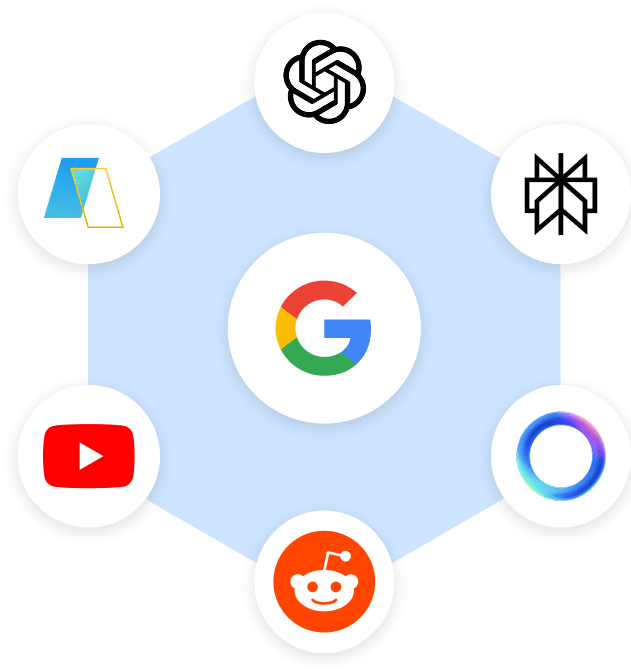
Turn AI ad inspiration into real results
AI-generated ads aren’t a passing trend. They’re a competitive advantage for brands that want to connect, convert, and stand out. The examples above prove what’s possible when you combine the right tools with strong creative direction.
But great tools need great strategy. That’s where WebFX comes in.
We don’t just play with shiny tools. We build revenue-driving strategies that combine 25+ years of digital marketing expertise with next-gen AI capabilities. Our team of 750+ experts knows how to turn creative chaos into clear ROI: More clicks, more conversions, more growth.
Ready to turn AI buzz into real business results? Contact us online or call 888-601-5359 to speak with a strategist today about our high-impact AI advertising services.
-
 Albert Dandy Velasquez blends SEO strategy with compelling storytelling to help businesses boost their visibility and revenue online. With a B.A. in English and certifications from HubSpot, Semrush, and Google Analytics, he has written and optimized hundreds of articles on organic SEO, content strategy, and user experience. He regularly contributes to the WebFX blog and SEO.com, creating content that helps readers turn marketing goals into measurable results. When he’s off the clock, he’s usually exploring new neighborhoods on two wheels, filming travel content, or chasing golden hour with a coffee in hand.
Albert Dandy Velasquez blends SEO strategy with compelling storytelling to help businesses boost their visibility and revenue online. With a B.A. in English and certifications from HubSpot, Semrush, and Google Analytics, he has written and optimized hundreds of articles on organic SEO, content strategy, and user experience. He regularly contributes to the WebFX blog and SEO.com, creating content that helps readers turn marketing goals into measurable results. When he’s off the clock, he’s usually exploring new neighborhoods on two wheels, filming travel content, or chasing golden hour with a coffee in hand. -

WebFX is a full-service marketing agency with 1,100+ client reviews and a 4.9-star rating on Clutch! Find out how our expert team and revenue-accelerating tech can drive results for you! Learn more
Try our free Marketing Calculator
Craft a tailored online marketing strategy! Utilize our free Internet marketing calculator for a custom plan based on your location, reach, timeframe, and budget.
Plan Your Marketing Budget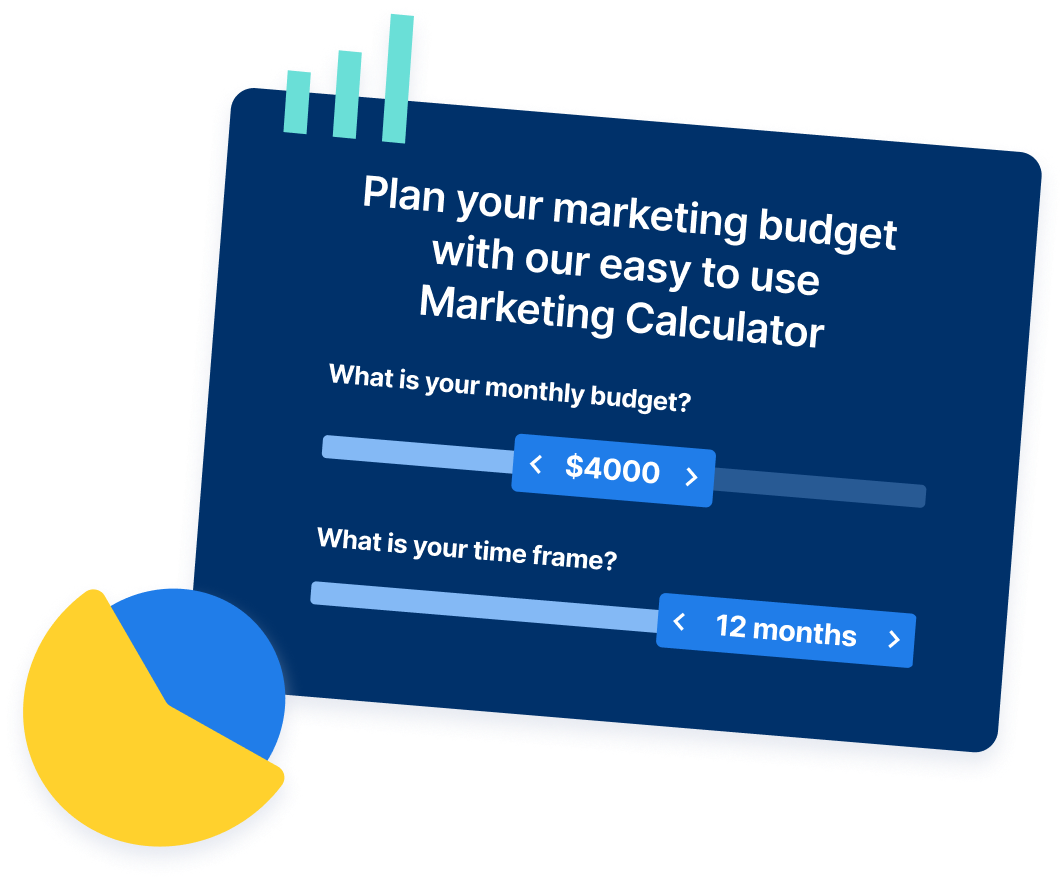
Table of Contents
- What are AI-generated ads (and why are brands using them)?
- 10 AI ad examples from top brands
- 1. Liquid Death: Pure chaos with Veo 3
- 2. Pizza Hut: The “Pepperoni Hug Spot” fever dream
- 3. Kalshi: NBA Finals ad made entirely with AI
- 4. Coca-Cola: “Create Real Magic” with AI art
- 5. Nike: “Never Done Evolving” with Serena Williams
- 6. Cadbury: Personalized AI ads with Shah Rukh Khan
- 7. Dove: “The Code” campaign against AI beauty bias
- 8. Carvana: 1.3 million personalized AI videos
- 9. BMW: “The Ultimate AI Masterpiece”
- 10. Heinz: “AI Ketchup”
- What these viral AI ad examples have in common
- Tools you can use to create AI ads
- AI ethics in advertising
- FAQs about AI-generated ads
- Turn AI ad inspiration into real results

See AI Marketing in Action
Explore how WebFX helped a regional brand get discovered in AI search experiences — proving what’s possible with today’s AI-driven marketing!

Proven Marketing Strategies
Try our free Marketing Calculator
Craft a tailored online marketing strategy! Utilize our free Internet marketing calculator for a custom plan based on your location, reach, timeframe, and budget.
Plan Your Marketing Budget
 Content Specialist
Content Specialist
What to read next
